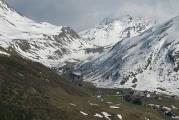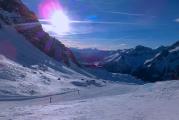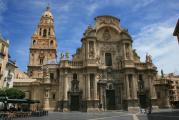White Shores old photographs. My small homeland - White Shores (the history of the village in photos from the family album)
Dear visitors of EtoRetro.ru, you have a collection old photographs of the city of White Coast? Join us, post your photos, rate and comment on photos of other members. If you recognize a place in an old photo, an address, or recognize people in a photo, please share this information in the comments. Project participants, as well as ordinary visitors will be grateful to you.
Our participants have the opportunity to download old photos in original quality (large size) without the project logo.
What is retro photography, or how old should it be?
What can be considered old photo worthy for publication on our project? These are absolutely any photos, starting from the moment of the invention of photography (the history of photography begins in 1839) and ending with the end of the last century, everything that is now considered history. And to be specific, it's:
- photographs of the city of Belye Bereg in the middle and late 19th century (usually 1870s, 1880s, 1890s) - the so-called. very old photographs (you can also call old ones);
- Soviet photography (photos of the 20s, 30s, 40s, 50s, 60s, 70s, 80s, early 90s);
- pre-revolutionary photograph of the town of Belyye Bereg (before 1917);
- military retro photographs - or photos of the times of the war - this is the First World War (1914-1918), Civil War(1917-1922/1923), second World War(1939-1945) or in relation to our Motherland - the Great Patriotic War (1941-1945), or the Second World War;
What should be in the photo?
Anything, be it streets, buildings, houses, squares, bridges and others architectural structures. It can be both, and another type of transport of the past, from to wagons. These are the people (men, women and children) who lived in those times (including the old family photos). All this is of great value and interest to EtoRetro.ru visitors.
Collages, vintage postcards, posters, vintage maps?
We also welcome both a series of photos (using the ability to upload several photos in one publication) and collages (a well-thought-out combination of different photos, usually from the same place using some kind of graphic editor) - kind - was / became, somehow immersing in a kind of time travel, reflecting a look into the past. The same place on the project and
We ended the last part on one of the many stairs connecting through a gloomy (and how you wanted in early spring on a steep slope? private sector two main streets of the center - upland Lenina Avenue and Podgornaya Kalinin Street. True, there was a staircase leading down from the Peter and Paul Monastery, but we went down from the Church of the Savior and the Sepulcher.
Below you can clearly see the Bryansk Arsenal in the floodplain of the Desna, and from such plots you can feel the Mining Urals - an old, more than once specialized plant near the river, which is essentially the center of the Old City. As already mentioned in the first part, Bryansk was distinguished by a unique location - a Russian city at the junction of routes to the west, therefore, in case of war, it was assigned the role of a deep auxiliary rear: even under Peter I, the production of edged weapons was established here, in 1736-37 a shipyard worked, rafting the fleet to the Dnieper for the next Russian-Turkish war, and even dry rations for the garrisons were baked near the main station from the end of the 19th century (see the first part). But the culmination of all this was the Arsenal founded in 1785, which became an important supplier of light artillery for Russia for a century and a half, quickly dispersing from here along the fortresses and borders. When the enemy came to Bryansk for the first time since the Great Troubles - it was in 1941-43 - the Arsenal was evacuated to Katav-Ivanovsk and somehow disappeared among the defense industries of the Urals. Its old site was restored as the Dormash plant, now one of the main manufacturers of road construction equipment in Russia - and this product, as you understand, is in great demand with us. In 1993, "Dormash" was returned to the old, but no longer relevant name "Bryansk Arsenal", and in general, with its fate, it greatly resembles another giant of the ancient industry -.
By the way, the reservoir in the last frame is not the Desna, but the Old Woman, as they call a small old lake that limits Old city in the north. We didn’t really walk there, which, however, he did for us darriuss , to which I refer once again. But even he (not to mention me) did not reach Novaya Sloboda on the slopes behind the Old Woman - and there, by the way, there are Upper and Lower Lubyanka streets and a very beautiful Tikhvin Church (1775) on one of them. The staircase led us to the former trading school of the merchant-lumberman and the main Bryansk philanthropist Pavel Mogilevtsev (1908-09), now occupied by a drug dispensary. The bright red and white building, as it were, opens up the Old Town on the way from the station:
But it was not very pleasant to go further - the narrow and long street of Kalinin is not inferior to Lenin Avenue in traffic, but at the same time it is sandwiched between the slope of the mountain and the arsenal fence with stubborn cinders of cars. We had to walk for 15 minutes in this noise and fumes, but someone has to live here ...
Above is the Gorne-Nikolskaya Church, to which we will climb:
We passed the current, extremely dull outwardly, but sparkling with a brand new repair, the checkpoint of the Arsenal, and after another 5-10 minutes we came to its old site, given over to construction a few years ago. They break (hopefully, at least "with the preservation of the facade") the once very picturesque carpentry and arc and assembly shop of the early twentieth century:
But the main ensemble of the plant further down the street is inviolable - this is the Foundry Yard, which has been preserved since the founding of the plant, that is, from the 1780s. Along the street - the former Foundry House, then the plant management under a sharp roof (on the "Dormash" there were factory recreation centers) and a long building of public services. All this, of course, has long since changed its functions and has a clear touch of Stalinism, obtained during the restoration after the war - but looking at such buildings, you understand that Stalin's classicism is not so different from Catherine's.
Initially, the Foundry Yard was a square of buildings, two of which, away from the "red line", including the ruins from the frame before last, were completely replaced in the 19th century:
Basically, the old site has been cleared and is waiting for the developer. In principle, it is a normal practice in the world (all the more so, the new site continues to work properly), and when I see the ruins of the assembly shop, I immediately remember "Luther's quarter", where almost the same shop was turned into a multi-storey parking lot. However, the project has obviously dragged on, and so far no buildings, no factory - just ugly wastelands with a lone water tower. There is a very good page about Arsenal with a description of individual workshops.
From here we decided to climb up - but not yet to the avenue, but to the Petrovsky mountain hanging over the Arsenal:
The top of which is now occupied by the possessions of the Bryansk diocese ("priests and merchants" - this is how the population of Bryansk in Bezhitsa was characterized a hundred years ago). Bishop's house (1870) - perhaps the most beautiful example of the Bryansk pre-revolutionary:
Now there is a whole monastery, based on which the Gorno-Nikolskaya Church (1751), both in age and location (hanging over the plant) reminiscent of the temples of the Old Urals. But the Ural churches do not have an Old Russian past, and this church, known in the tree from the 14th century, was also “famous” for the fact that in 1340, following the results of a national gathering, the local prince Gleb Svyatoslavovich was killed by an angry mob on its porch (what he was so guilty of - history is silent). Previously, there was also the Nizhne-Nikolskaya Church, demolished, if I'm not mistaken, during the Soviet expansion of the plant.
From here, through the old barracks of the Kashirsky regiment, now occupied by the administrations of the diocese, it is within easy reach to Pokrovskaya Gora and, accordingly, the Pokrovsky Cathedral (1698) standing on the next descent - oldest building Bryansk. In the years 1500-1798 it was a cathedral, then it was reduced to a regimental church, but in general it is still just a parish church:
And opposite the cathedral (in the background - the same ex-barracks and the street along which we came) a very interesting house, obviously of the 18th century. For some reason, it is known among the people as the "governor's house", but which governor in county town? This is the house of the general director (that is, not the general director, but the general, as I understand it) of the Bryansk Arsenal, built together with the plant. However, the Oryol governors may have been here during their visits to their main county town.
The guns seem to be replicas of the first arsenal products:
They aim at an unexpectedly neglected square (this despite the fact that there are several very decent parks in Bryansk!), At the other end of which stands the stele of Combat and Labor Valor (1985), which the Bryansk residents call it nothing but "five to two" for the characteristic position of the hands of the virgin crowning him. The hero on horseback is none other than Alexander Peresvet, a monk-warrior who fought a duel with the Tatar Chelubey on the Kulikovo field and died, defeating the enemy. In Bryansk, this semi-legendary hero is considered one of his own, although, God forbid, they began to "settle" him here in the 19th century. Next to the bogatyr is the narrator Bayan from "The Tale of Igor's Campaign", he comes from the Chernigov Principality, where Bryansk was part of those days.
We descend from the mountain and continue our way along Kalinina Street, among the houses of the turn of the 18th and 19th centuries. The long building in the background is the same public services of the Arsenal. In the foreground, apparently, there are also arsenal buildings of the 18th century (not counting the silicate fire from obviously completely different times), the house on the right under the Soviets changed roles from the Metallist club (meaning a worker in the metalworking industry, not a hairy one) to the factory medical unit.
Kalinina Street leads to the spacious, but at the same time very loose architecturally Slavyanskaya Square - however, no one calls it that in the city, it is known to the Bryansk residents as the Embankment, and the Desna bank itself with a pontoon bridge to former station I showed Bryansk-Gorod in the first part:
Before the revolution, the square was completely Cathedral, since the Novopokrovsky Cathedral (1862-97) stood on it, built in turn on the site of the Savior-Polikarpov Monastery, whose church was a cathedral since 1798. The cathedral burned down during the war, the ruins were broken up already in 1968.
Now, on the site of the cathedral, there is a chapel, for some reason in the "Carpathian" style (not counting the plowshare onions, of course):
There is also a philharmonic (1985):
Spider fountain "Friendship":
And the local "Potemkin Stairs" of Gagarin Boulevard, along the uppermost pedestrian section of which we walked in the last part. Let's get to it a bit later:
And first, let's walk a little more along Kalinin Street, this "reserve" of the past life of the county factory Bryansk:
Here (in the male progymnasium) in 1882-87 Vasily Rozanov taught:
A block from the square is the chapel of the Holy Warriors (20002-06, in memory of those who died in local wars) and another recreation center (in Bryansk, the question “Why so many?” is quickly brewing), in this case, the Soviet district:
But I must say - one of the most beautiful in the city:
Well, now let's go back to the Embankment and go upstairs:
Alas, along front staircase- wretched ruins and gloomy lanes:
Although not all over:
And this is where this staircase leads (what, by the way, was it in 1979?):
Ahead is Karl Marx Square (before the revolution, Red), or Round Square - I mentioned them several times in the last post. This is the "very center" between the ravines Upper and Lower C at dock, and only a few tens of meters separate this area from Lenin Avenue. Nevertheless, she would not fit into the last post, since this is the most interesting ensemble of Bryaska. Even in the plan - the circle of the square, inscribed in the building square:
Let's go around it from below (that is, from the end of the stairs) counterclockwise. To the left of the entrance - the Bryansk Regional Duma (1955) and the Women's Gymnasium (1907), which was the city committee under the Soviets, and is now occupied by various state institutions:
On the right - the so-called Wine Castle, in fact, a banal distillery "Snezhet" in the buildings of the 19th century. Its red wall with a slogan on the frame before last, as well as the unrealized grandiose project of stalinok-"gates" in its place, on both sides of the main staircase, can be seen in Darriuss's post about the square and its surroundings.
In general, Bryansk is so industrial that there is a factory right on main square- in my opinion, even in the Urals they didn’t think of this:
On the next corner there are two more monuments of the Bryansk province of the 1920s, by the way, forming a single quarter with the former House of Banks and Industry built at the same time from the previous part. On the right is the House of Communications (1931), belated for the abolition of the province, on the left is the polyclinic (1927), past which Gagarin Boulevard just goes to Lenin Square and exits:
There are very beautiful lanterns throughout the square, equipped with loudspeakers near the Communications House, creating a relaxed background of some popular radio on the square:
On the next corner (on the right, pay attention to the turret of the House of Banks and Industry - this is about how close the place is from the last post) is already the third era - the Chernigov hotel (1946-47; and in Chernigov, it seems, there is a Bryansk hotel) ) and the regional library of course named after Tyutchev (1955), especially since the park named after him adjoins it on the other side:
And finally, the already familiar women's gymnasium - the most impressive example of pre-revolutionary school in Bryansk, closing the circle:
And along the street past it, you can also go to the oldest model - the Bryansk customs, founded here under Peter I (the building itself, however, seems to be the end of the 18th century):
Opposite across Fokina street, between the stalinok with towers - an entertainment complex " city hall", the former cinema "October", best known in Bryansk for the fact that on April 25, 1959 it fell on the audience during the session - according to official figures, 47 people died then, but since the investigation was strictly classified, locals believe that the victims were hundreds and hundreds, and in general, apart from the war, it was the largest tragedy in the history of Bryansk (however, captured Germans built the theater, and there is a legend that some structural defects were their revenge). A lot has been written about this tragedy and its participants ( ), well, they told me a story about how, during the collapse, one worker of "Dormash" got his bearings faster than anyone else, quickly pulled his boss out of the rubble (!), Got permission from him to drive to the plant for some departmental equipment, and this equipment saved a lot of people. major city there is probably such a place - somewhere a collapse, somewhere a fire, somewhere a crush or a bus falling into a river, somewhere a terrorist attack - only the figure almost always fluctuates around fifty lost lives.
Details of stalinok in the neighborhood:
Yes, constructivist houses from the time of the Bryansk province are lower down the slope:
In general, with Bryansk itself, this is ALMOST everything - in the next part there will be a combined hodgepodge of the sights of the city (Mounds of Immortality and Chashin Kurgan) and the surrounding area (Svensky Monastery, the miracle church in Tvorishichy). And then two more about Bezhitsa, which seems to be part of Bryansk, but "by eye" is a completely separate city.
Suburban bryansk village White Shores received another bridge - White. It was built over the weekend. They didn't even ask the state for a nail.
“There are people on Earth who cannot live without creating. These are the Beloberezhsky bridge builders, - this is how the Beloberezhsky people told about themselves.
Two weeks ago, they carried out preparatory work for the construction of an arched bridge to the Youth Beach. It was difficult to get only lumber. The inhabitants of the village together began to look for bars and boards.
On Saturday, the “whites ruled”. He came out with axes and saws, as usual, both old and young. They worked cheerfully, even festively, with jokes. Such enthusiasm was not expected by the Beloberezh residents themselves. From morning to evening saws rang and axes clattered. Some hammered oak piles, others laid spans of logs, and others built a deck. The new Beloberezhsky bridge across the canal is almost completed, it will be completed next Saturday. It will be not only beautiful, but also safe.



Sergey Konobeev notes:
- Women and girls took an active part in the construction. Everything was interesting, beautiful, appetizing, sometimes intriguing. Children rejoiced at scrambled eggs with lard.
Pilaf and a hot bath with an ice-hole became the final chord of the holiday of communal labor. In White Shores, about whose amazing inhabitants the Russian press has already told, they proved that a person does not live by salary and not by foreign cars alone. The joy of such communication is given first of all to children who enthusiastically talked about the day of creation.
White Shores- an urban-type settlement in the Bryansk region of Russia, administratively subordinated to the Fokinsky district of the city of Bryansk. Population - 9.6 thousand inhabitants (2010). The largest of settlements Bryansk region, which do not have local governments.
It is located 15 km from the eastern outskirts of the regional center, on the Snezhet River, on which the dam forms Beloberezhskoye Lake - the largest artificial lake in the Bryansk region. It is surrounded on all sides by the legendary Bryansk forests.
Railway station on the line Bryansk - Orel.
Palace of Culture in White Shores
Directly near the White Shores there is a junction of major highways M3 Moscow-Kyiv and A141 Orel-Smolensk.
Story
The date of foundation of the current urban settlement is considered to be 1868, when the railroad station White Shores on the Bryansk-Orel line. But back in the 1700s, 6 km from the current village was founded monastery Beloberezhskaya desert, from the name of which the whole surrounding area began to be called White Shores (which later gave the name of the station). The rapid development of the village began in the 1920s in connection with the construction of the Bryansk State District Power Plant.
The status of an urban-type settlement was assigned by a decree of the Presidium of the All-Russian Central Executive Committee of November 20, 1932.
Attractions
To the west of the village is the monastery of Beloberezhskaya Pustyn, the largest memorial complex of the Bryansk region "Partizanskaya Polyana", an extensive sanatorium and health zone. 10 km to the south is the Khatsun memorial complex (on the site of a village burned by the fascist invaders).
Ecological situation
For a long time ecological situation in the town of Belye Berega was unfavorable due to significant air pollution by emissions from the Bryansk State District Power Plant, which operated on peat. Since the mid-1990s, the GRES has been converted to gas; the situation has improved significantly. However, since 2007, the state of the so-called "warm channel" - an unfreezing artificial channel that served to drain heated water from the turbines of the state district power station - has been causing concern. The Warm Canal was built in the late 1950s; over the past half century, it has become not only a favorite vacation spot, but a kind of miniature ecosystem has formed around it. Since 2007, due to the cessation of regular discharge warm water, the canal has turned into a stagnant reservoir, now unsuitable not only for swimming, but even for the habitation of the former flora and fauna. Since the canal flows directly into Lake Beloberezhskoe, an environmental disaster can spread to this reservoir, as well as cause diseases among the population.




